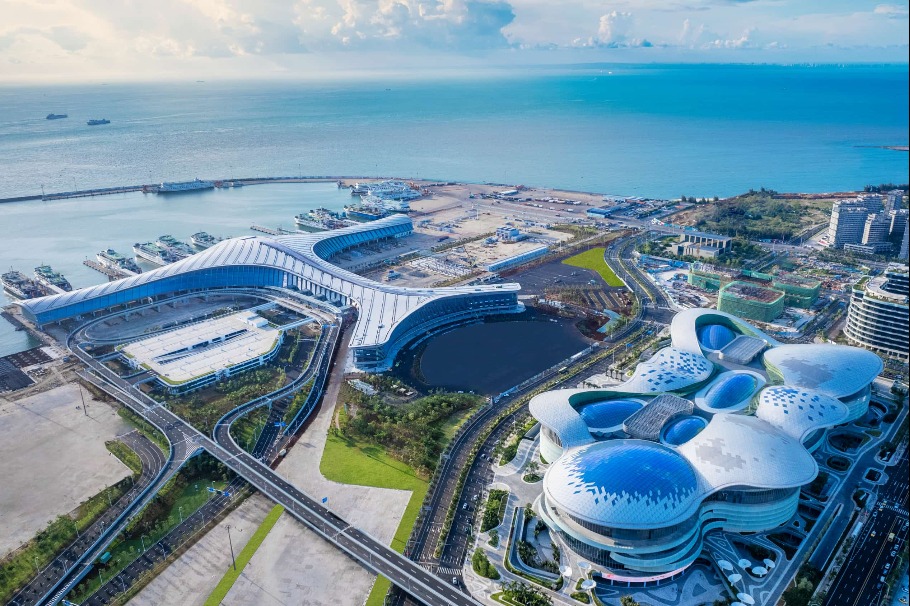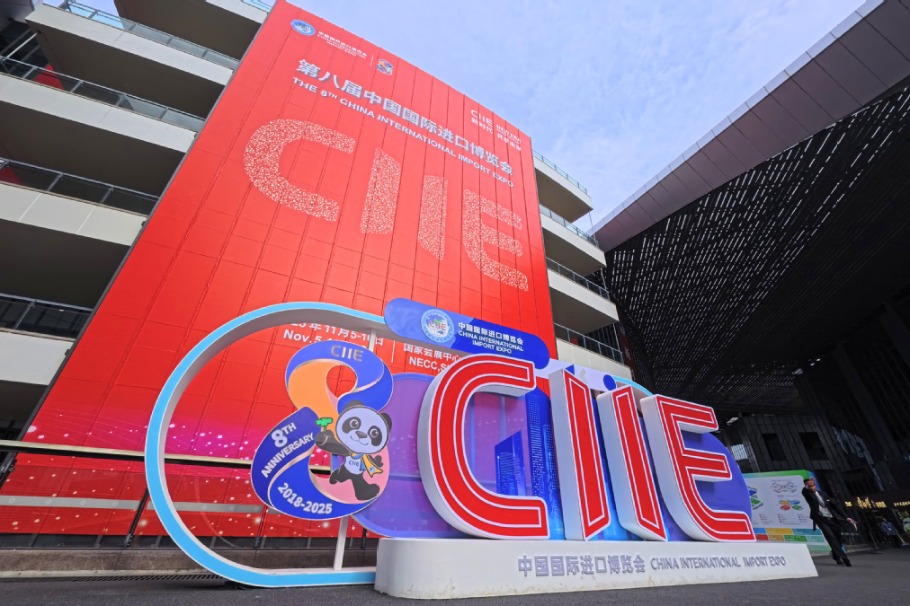China shows path to shared modernization


China's 15th Five-Year Plan (2026-30) recommendations, adopted at the fourth plenary session of the 20th Central Committee of the Communist Party of China in October, mark a pivotal moment in the country's long journey toward modernization. It continues a tradition of planning that has guided China's transformation for decades, but the new blueprint signals a more deliberate balance between growth, innovation and sustainability. The document's tone is pragmatic and forward-looking, emphasizing resilience and long-term coordination rather than speed. For those of us observing from within Asia, this plan's recommendations define the regional space in which Indonesia and its neighbors will pursue their own modernization paths.
The plan's recommendations identify three main priorities that focus on strengthening technological capacity, deepening the domestic market and aligning development with security. By 2035, per capita GDP is projected to reach the level of middle-income developed economies, personal income growth will match productivity, and the middle-income group is expected to surpass 700 million people. These targets link prosperity with social stability, suggesting that economic expansion is no longer about speed alone but about balance and fairness.
Innovation stands at the core of this vision. China is widely expected to raise research and development to about 3.5 percent of GDP by 2030, compared with 2.6 percent in 2024. One-fifth of this will be dedicated to basic sciences. Strategic attention is directed to semiconductors, artificial intelligence, quantum computing, hydrogen energy and advanced materials. The goal is to create what policymakers call new quality productive forces, connecting technology, education and human talent into a single system. This orientation resonates across the region. Research partnerships, transparent standards and skilling programs can transform technology exchange into shared innovation rather than dependence. As Indonesia invests in vocational and research capacity, cooperation in renewable energy, biotechnology and digital governance will shape the quality of its growth.
Environmental transformation forms the second foundation. Investment in new energy vehicles, battery storage and green manufacturing will expand, supported by stronger environmental regulations. This shift toward a green economy has significance beyond China's borders. Southeast Asian economies, from Indonesia to Vietnam, are pursuing similar transitions toward cleaner energy and sustainable industrial growth. Collaborative projects in green manufacturing, low-carbon logistics, and energy storage could transform these national efforts into a regional movement where climate action and economic opportunity reinforce each other.
The plan recommendations also expand the concept of Digital China. It envisions greater computing power, a secure data infrastructure, and the integration of digital systems into the real economy. Global digital trade already exceeds $3 trillion annually and is expected to grow rapidly through artificial intelligence, cloud computing and smart logistics. Such expansion will redefine supply chains and commerce across Asia. In Indonesia, the rise of the digital economy reflects the same dynamic. Cooperation in cybersecurity, e-commerce governance and data regulation will help ensure that interdependence enhances national resilience rather than limits it.
Domestic reform remains at the heart of the plan recommendations' resilience logic. Expanding household consumption, stimulating private investment and building a unified national market are expected to create a self-sustaining cycle of supply and demand. Internal circulation is not isolation but a reinforcement of external openness. A stable Chinese market will generate consistent demand for regional exports while supporting cross-border industrial cooperation. Indonesia's downstream industries, Vietnam's electronics sector and Thailand's bio-circular economy can all integrate into this evolving regional production structure.
The Belt and Road Initiative illustrates this new phase of pragmatic cooperation. The initiative is being refined around the principle of high-quality development. Projects are designed with greater transparency, financial sustainability and environmental accountability. The Jakarta-Bandung high-speed rail is a visible success, but the deeper transformation lies in the emerging collaboration on digital infrastructure, renewable energy and health systems. Financial innovation supports this shift. The plan recommendations promote green and inclusive finance, as well as blended investment mechanisms such as green bonds, to mobilize long-term capital for sustainable projects. Aligning regulatory standards and credit assessment across Asia can turn cooperation into tangible investment pipelines that advance shared growth.
Human capability connects all these ambitions. The plan recommendations link education, research, and industry through innovation clusters and vocational programs. Collaboration among universities, think tanks and companies will prepare the workforce for emerging industries. Joint scholarships, apprenticeships and policy changes can help align skills with new economic realities. For Indonesia and the region, building human capital is central to ensuring that modernization is equitable. A generation equipped with critical thinking and technical competence will sustain development more effectively than any policy instrument.
Security, as defined in the plan recommendations, extends beyond defense. It covers food, energy, finance and supply-chain stability as part of a broader concept of national resilience. China's dual-circulation strategy balances domestic strength with global openness to prevent systemic shocks. This notion resonates with many in Asia, who see security as cooperation rather than confrontation. As the global environment grows more volatile, regional resilience will depend on collective stability and mutual confidence.
What emerges from the plan recommendations is not a blueprint for dominance but a framework for coexistence. Modernization is seen as an evolving conversation between different systems seeking equilibrium. Southeast Asia is not an audience to this process but a participant shaping its outcome. With its demographic vitality, pragmatic diplomacy and creative industries, the region contributes to a shared geography of progress. Indonesia's leadership is crucial in this respect. As a democracy and maritime hub, the country can guide regional cooperation toward transparency, accountability and mutual benefit. By strengthening governance capacity, research networks and industrial collaboration, Indonesia can ensure that engagement with China contributes to resilience rather than dependency.
In its next five-year plan, if China achieves its benchmarks of research and development above 3.5 percent of GDP, carbon peaking before 2030, and expansion of the middle-income group, it presents a disciplined model of modernization. It shows that State planning and market vitality can reinforce each other when guided by a long-term vision. For the rest of Asia, this is both an opportunity and a challenge. It calls for regional cooperation grounded in trust and informed by local priorities. Development, in this sense, becomes a collective act rather than a competition between models. If cooperation is guided by openness, accountability, and shared innovation, modernization can become a common enterprise that strengthens both national and regional confidence.
In the coming years, Indonesia and its neighbors will need to navigate this landscape with clarity and principle. The future of Asia's growth will depend not only on investment and technology but on the moral and institutional choices we make. China's 15th Five-Year Plan recommendations offer a reminder that progress is sustainable only when it enhances trust, widens opportunities and deepens cooperation. That is the essence of shared modernization in a region where prosperity and stability must grow together.
The author is the executive director of PARA Syndicate, a Jakarta-based independent think tank.
The views don't necessarily reflect those of China Daily.
If you have a specific expertise, or would like to share your thought about our stories, then send us your writings at opinion@chinadaily.com.cn, and comment@chinadaily.com.cn.


































